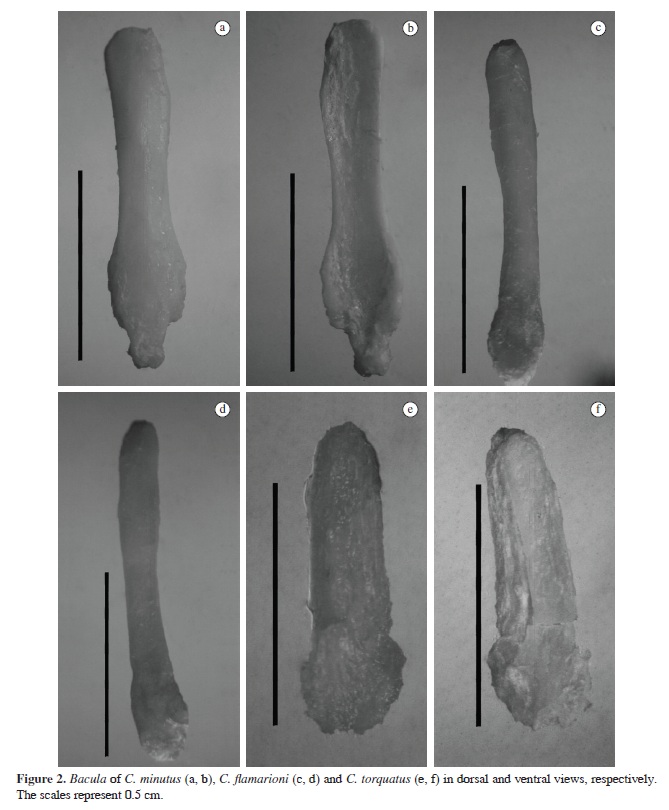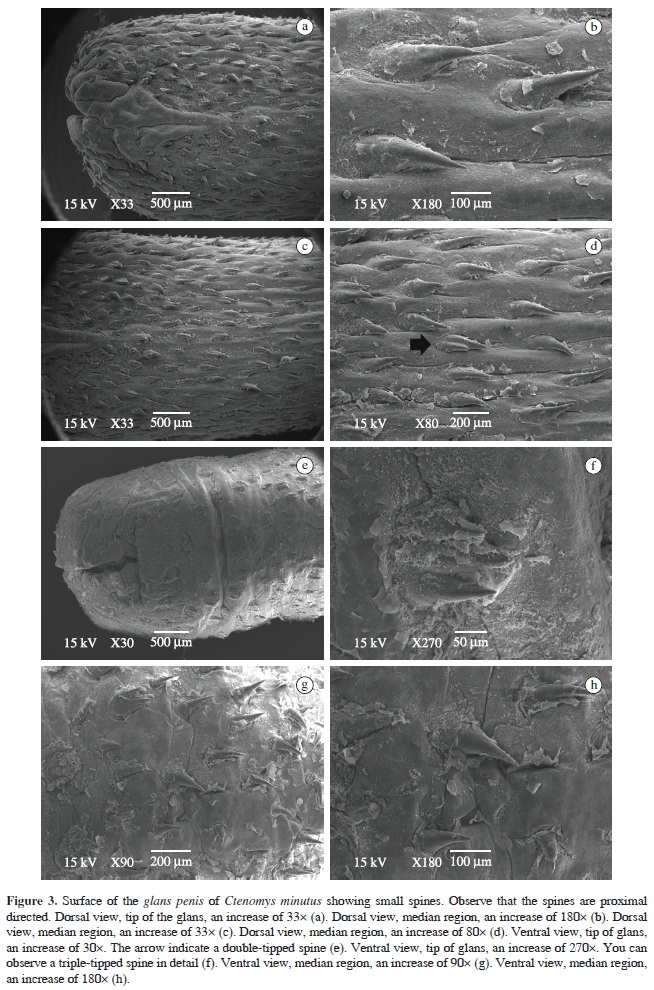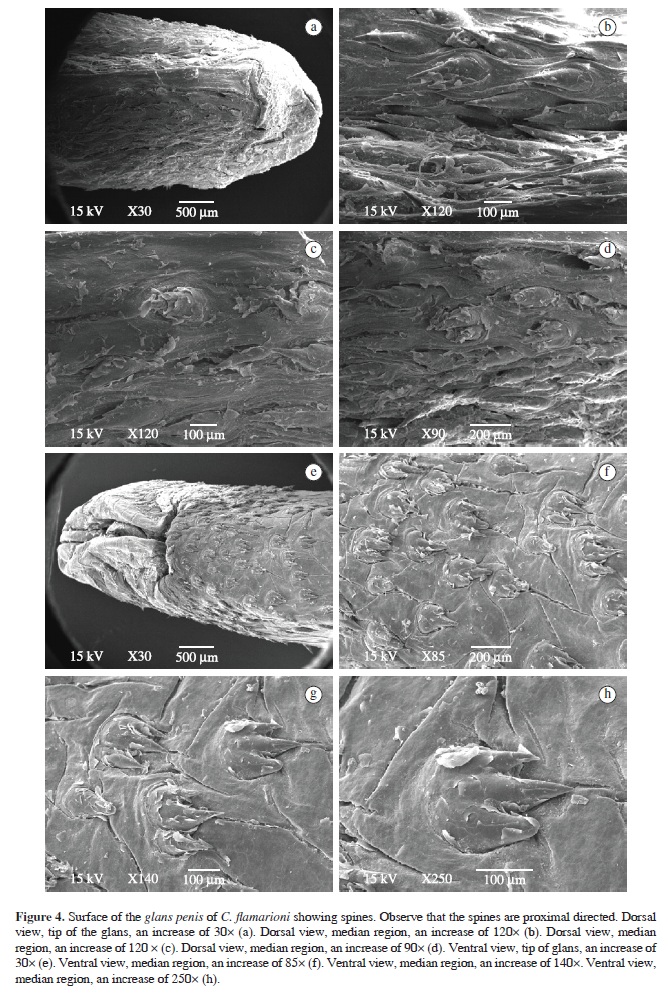The present study analyses the glans penis and baculum morphology of three Brazilian tuco-tucos, Ctenomys torquatus Lichtenstein, 1830, Ctenomys minutus Nehring, 1887 and Ctenomys flamarioni Travi, 1981, in order to identify possible variations and understand some more about this taxonomically complex group. We used fixed penis from 15 previously listed adult specimens. For a more detailed baculum analysis, the penis underwent dissection and diaphanisation, whereas to analyse the glans penis surface we used Scanning Electron Microscopy (SEM). Results showed striking differences in baculum morphology among the three species. While C. minutus have a particular V-shaped proximal baculum tip, C. flamarioni baculum is thin throughout the shaft with rounded proximal and distal tips. Ctenomys torquatus have a shorter and larger baculum, similar to what has previously been described for the species. Glans penis surface microstructure analyses also revealed inter-specific differences, with penial spines varying in shape, size and, especially density. Although C. torquatus has a relatively small penis, it has the largest penial spine density, which suggests a more complex penial ornamentation in this species.
Ctenomys; Glans penis; morphology; Baculum; scanning electron microscopy





